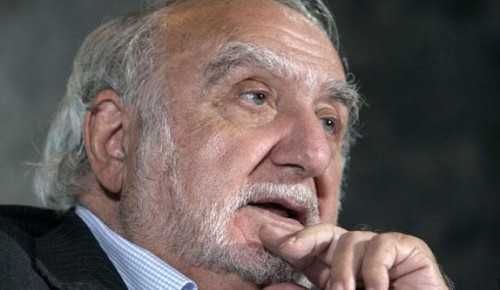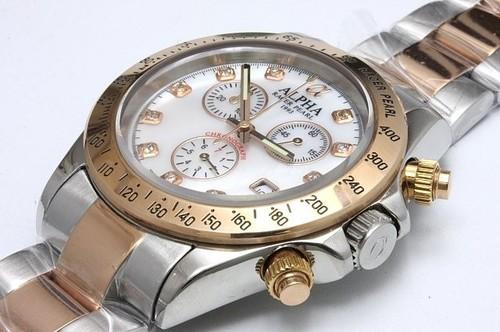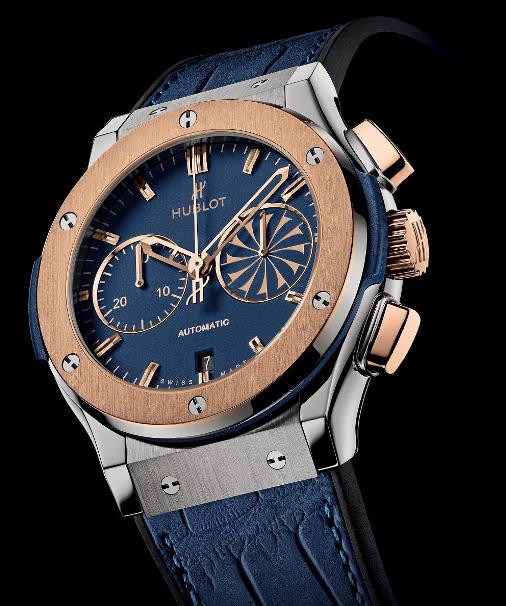Whether it’s a watch or a clock, there is no mistaking the distinctive Breguet elegance, a legacy of its founder’s own talent and taste. Abraham Louis Breguet delighted in the elegant art of guilloche and developed numerous horological innovations that proved to be significant and lasting breakthroughs.
“Breguet has always been about beauty, style, and simplicity.”
Nicholas Hayek
This is the first in a series of articles that will focus upon major turning points in time. Master clock and watchmaker Abraham Louis Breguet was responsible for more than most which is why today a Breguet watch is still regarded as one of the most desirable of all brands.
The late Nicholas Hayek, former CEO of the Swatch Group, the parent company of Breguet, was one of the brand’s most ardent admirers:
The turning points in time of Breguet
1747
Abraham-Louis Breguet born in Neuchâtel, Switzerland
1775
Abraham-Louis Breguet opened his own workshop on the Quai de l’Horloge on the Île de la Cité in Paris, France. He achieved this by means of a handsome dowry granted to him upon his marriage to his wife Cécile Marie-Louise L’Huillier.
1780
Improved the watch known as the perpetual or automatic
Louis Abraham Perrelet claims to have invented such a device in 1770 for pocket watches, and on December 23, 1778 a report of the Académie des Sciences de Paris stated that a certain Hubert Sarton of Liège, patented “a watch which never needed winding”. Perrellet sold Breguet some of his watches and it is safe to say that Breguet improved upon the automatic winding mechanism and it became his perpetual watch, although it never worked reliably and he stopped making them in 1800.
1783
Invention of the gong for repeater watches (bells were used until then)
This invention considerably reduced the width of repeater watches.
Designed the apple-shaped ‘Breguet’ hands and ‘Breguet numerals’ which still grace watch dials today.

1786
Breguet loved guilloche work and it has become a hallmark feature of Breguet quality and intricate craftsmanship ever since.
Appearance of the Breguet guilloche dial
1787
Adopted and improved the lever escapement. Abraham-Louis Breguet used it in its definitive form from 1814 (this form is still in use).
1793
Developed a small watch showing the equation of time
1790
Invented the ‘pare-chute’ anti-shock device
This device was introduced for the famous Marie Antoinette pocket watch, which sadly Marie Antoinette never got to see and was only finally completed three years after Breguet’s death. The coming years were to see a string of key developments by Breguet.

1794
Invented a retrograde display mechanism.
1795
Invented the Breguet spiral (flat spiral balance spring with overcoil).
Invented the ‘sympathetic’ in which a clock rewinds and sets to time a detachable watch.
1799
Invented the ‘tact’ watch that could be read by feel in the pocket or the dark.
During this period Breguet was at his most inventive. He had just returned to Paris after two years in Switzerland in order to avoid the stormy troubles of the French Revolution where he could have been considered a target due to his close association with the court. Upon his return he was brimming with ideas which he put into effect as soon as he returned to his headquarters in Quai de l’Horloge. He then patented what is probably his greatest invention of all.
1801
Patented the tourbillon escapement, developed circa 1795

Breguet had developed the tourbillion in 1795, but it took fully six years to patent it. Its purpose was to nullify the effects of gravity in pocket watches. The first pocket watch equipped with a tourbillon mechanism was sold in 1805 but it was presented formally to the public during the Parisian show of French industrial products in 1806. Priced out of the reach of all but a lucky few, the tourbillon is rarely seen up close and personal. Once viewed, however, one cannot help but be seduced by the stately movement of the tourbillon (meaning “whirlwind” in French). Even with today’s advanced technology, the tourbillon can only be built by the most skilled watchmakers.
1802
Invented the echappement naturel, a double-escape wheeled chronometer escapement that needed no oil
1810
Developed the world’s first wrist watch for Caroline Murat, Queen of Naples

With the acquisition of thirty-four clocks and watches from 1808 up to 1814, the ambitious and very beautiful Queen of Naples easily took pride of place among Breguet’s most favoured clients. As the younger sister of Napoleon, she reigned with her husband the king, Joachim Murat, from 1808 to 1815, and the special relationship which she fostered with Breguet during this time produced the first watch specially designed to be worn on the wrist. Commissioned in 1810, paid for in 1811 and delivered in 1812, it was revolutionary in conception: an ultra-thin repeating watch, oblong in shape, equipped with a thermometer and mounted on a wristlet of hair entwined with gold thread. No difficulty was too great for Breguet to overcome in his determination to satisfy Queen Caroline, and he was to be duly rewarded.
1821
Developed the “inking” chronograph, in partnership with Frédérick Louis Fatton.
1823
Death of Abraham Louis Breguet
The death of A. L. Breguet, the world’s greatest horologist, at age 77, was certainly a turning point in time as far as the Breguet manufacture was concerned, and many mourned his passing.
The business was taken over by his son, Antoine Louis. It was ‘business as usual’ and the innovative spirit continued. In 1830 Breguet produced yet another world first – the first watch to be wound without a key.
In 1833, Antoine passed the helm over to his son, Louis. In 1870 the company took a new direction, with the works foreman, Edward Brown taking over the day to day operations.
1870
From Breguet to Brown
When A. L Breguet died in 1823, Breguet et Fils gradually became more of an engineering firm than a watchmaking concern. As is so often the case, future generations of the Breguet family sought their fortunes in other, newer technologies.
This led in 1870 to Breguet being overseen by the English watchmaker Edward Brown who headed the boutique’s watchmaking operation.
Under Brown and his descendants, Breguet remained a niche Parisian watchmaking boutique for the next century, producing only a few hundred watches per year.
Following WWI as the age of wristwatches dawned, Breguet, like its fellow prestigious Parisian marque Cartier, were quick to seize on the trend.
However, by this time Breguet, without the innovative genius of its founder, had increasingly started to become less and less distinguishable from their contemporaries, other than for the unique pieces made-to-order for special clients.
1970
Turbulent times
As the quartz revolution dawned in 1970, the Brown family sold the Breguet boutique to the now infamous Chaumet brothers. Parisian jewellers, the Chaumet’s attempted to build the Breguet brand, and revive the signature aesthetic which we now regard as the “Breguet look.”
Production was increased, but the company lost money every year. When the Chaumet’s went bankrupt in 1987 amid a major financial scandal, the Republic of France sold its patrimony to the international investment firm Investcorp.

1994
Operating at a loss
Nouvelle Lemania and Valdar were also acquired a few years later (1991) and united into a “Groupe Horloger Breguet.” At the time Nouvelle Lemania only supplied Montres Breguet with 9% of its movements – just the high horology repeaters and tourbillons, while the majority were provided by Jaeger-LeCoultre and Frederic Piguet.
Nouvelle Lemania was itself losing money and this was generally deemed a poor acquisition by the industry.
Breguet was transferred to L’Abbaye in 1994, as production expanded to nearly 5,000 watches a year (1995). Montres Breguet began to use Nouvelle Lemania’s lesser legacy movements as well, transferring watchmakers and additional watch production to Lemania beginning in 1997, thereby increasing its workforce by nearly 50%.
By that time watch production was at a new high of 6,000 per annum, but the company was still losing money, and retailers were dumping watches far below their inflated list prices.
1999
Acquisition by the Swatch Group
After more than ten years of heavy investment and profitless growth, Investcorp finally extracted a profit from the Breguet Group when it was sold to the Swatch Group in 1999.
Swatch had ambitious plans to conquer the exclusive world of haute horology. The plan was for Breguet to become the Group’s crown jewel and the world leader of haute couture watchmaking.

But problems still existed. The forced growth of Chaumet-Investcorp’s post-boutique era of mass production had seriously undermined the quality and credibility of the Breguet product and brand in many ways.
2002
Nicolas Hayek
The task of restoring the Breguet brand was personally taken up by Nicolas Hayek, the builder of the Swatch empire. While remaining chairman, Hayek resigned his position as president and CEO of the Swatch Group in June of 2002 in order to make Montres Breguet his priority. This is akin to a king abdicating his throne to personally captain a single company in his army, albeit an elite one.

In the short term Montres Breguet slashed its prices across the board. The aforementioned ref. 3130 had its price reduced to $22,700 – nearly a 28% reduction, bringing it more in line with the comparable 5054.
Nicolas G. Hayek also revived the cultural and emotional dimension of the brand and restored it to its noble pedigree.
Breguet back to its best

Now able to draw upon the industrial and commercial strength of the Swatch Group, the brand had all the material and technical resources it would need to perpetuate the art of fine watchmaking and to create exceptional models in order to meet the expectations of brand devotees and connoisseurs.
The brand was equipped with a manufacturing facility on a par with its ambitions. They recruited the best-qualified watchmakers warmly encouraged to excel in their respective arts and crafts.

Substantial and regular investments were made in state-of-the-art testing machinery as well as in research and development. Under Nicolas Hayek’s leadership, Breguet developed and registered more than 77 new patents, and also built a new movement each year, several of which were truly revolutionary, such as the double tourbillon.
2010
Marc A. Hayek
Following the death of Nicolas Hayek on June 28th 2010, his grandson Marc A. Hayek has taken up the reins of the brand.

Breguet excelled at Baselworld 2011 with the introduction of several important new timepieces and, in the opinion of many, they were among the most active and exciting of the prestige brands of the entire show.
Breguet. The spirit is alive and the story continues.
We are indebted to Cyberspaceplaza.com for much of the content of this article









One thought on “Turning Points in Time of Breguet”